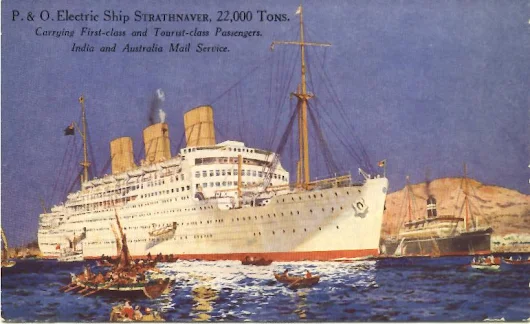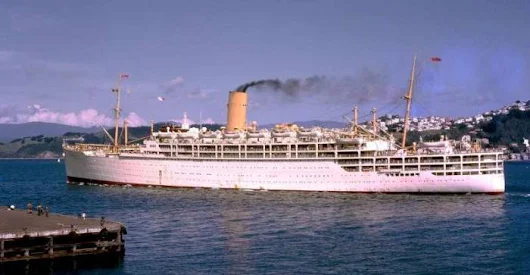Bismarck Hunting - Pride of The German Fleet - asvp > .
Der Bismarck: Doomed to Fail? - WW2 > .
Sink the Bismarck! - Demise of Pride of the Kriegsmarine - WW2 > .
Inside The Cockpit - Fairey Swordfish - MAH > .
Bismarck versus Fairey Swordfish
The Bismarck was struck critically by an attack of 15 Swordfish bi-plane bombers, yet wasn't able to shoot a single one down. How was this possible, considering that the Bismarck was the most advanced Battleship of the Kriegsmarine and the Fairey Swordfish a rather archaic and fragile look plane? Was it the visibility, were the Germans just bad shots, was there a problem with the AA guns or the fire control system or other factors?
Bismarck & Denmark Strait; Hood, Prince of Wales
"Scottish pilot who helped sink the Bismarck dies"
"The air strike carried out by the biplanes from HMS Victorious and Ark Royal on 26 May 1941 was said to have been Britain's last hope of stopping the Bismarck.
Mr Moffat described flying through "a lethal storm of shells and bullets".
The air strike on the Bismarck was launched as the battleship headed to the relative safety of waters off the coast of France.
Mr Moffat and his crew took off in his Swordfish L9726 from the deck of Ark Royal and headed for the Bismarck, fighting against driving rain, low cloud and a gale.
Naval chiefs said he flew in at 50ft, nearly skimming the surface of the waves, in a hail of bullets and shells, to get the best possible angle of attack on the ship.
At 21:05 he dropped the torpedo which hit its target, jamming the rudder of Hitler's flagship.
The battleship was forced to steam in circles until the guns of the Royal Navy's home fleet arrived the next morning."
http://www.bbc.com/news/uk-scotland-38297099 .
The Bismarck was struck critically by an attack of 15 Swordfish bi-plane bombers, yet wasn't able to shoot a single one down. How was this possible, considering that the Bismarck was the most advanced Battleship of the Kriegsmarine and the Fairey Swordfish a rather archaic and fragile look plane? Was it the visibility, were the Germans just bad shots, was there a problem with the AA guns or the fire control system or other factors?
Bismarck & Denmark Strait; Hood, Prince of Wales
"Scottish pilot who helped sink the Bismarck dies"
"The air strike carried out by the biplanes from HMS Victorious and Ark Royal on 26 May 1941 was said to have been Britain's last hope of stopping the Bismarck.
Mr Moffat described flying through "a lethal storm of shells and bullets".
The air strike on the Bismarck was launched as the battleship headed to the relative safety of waters off the coast of France.
Mr Moffat and his crew took off in his Swordfish L9726 from the deck of Ark Royal and headed for the Bismarck, fighting against driving rain, low cloud and a gale.
Naval chiefs said he flew in at 50ft, nearly skimming the surface of the waves, in a hail of bullets and shells, to get the best possible angle of attack on the ship.
At 21:05 he dropped the torpedo which hit its target, jamming the rudder of Hitler's flagship.
The battleship was forced to steam in circles until the guns of the Royal Navy's home fleet arrived the next morning."
http://www.bbc.com/news/uk-scotland-38297099 .
41-5-(20-27) Bismarck & Denmark Strait; Hood, Prince of Wales
May 20-23, 1941
https://www.youtube.com/watch?v=2CV1tvMYFRs .
May 24, 1941
https://www.youtube.com/watch?v=Kz8pmbytxoQ .
May 24-25, 1941
https://www.youtube.com/watch?v=OJeI5_9c29s .
May 26-27, 1941
https://www.youtube.com/watch?v=cV0NNZbj2QI .
The British escorting destroyers were ordered to the battle coordinates as part of the overall forces sent to intercept the German ships they were detached the evening before the battle
Axis
German battleship Bismarck
German heavy cruiser Prinz Eugen
Allied
The British battleship Prince of Wales.
The British battlecruiser HMS Hood
The British heavy cruisers HMS Suffolk, Norfolk
The British destroyers HMS Achates, Antelope, Anthony, Echo, Electra, Icarus
https://en.wikipedia.org/wiki/Battle_of_the_Denmark_Strait .
https://en.wikipedia.org/wiki/Last_battle_of_the_battleship_Bismarck .
https://en.wikipedia.org/wiki/German_battleship_Bismarck .
May 20-23, 1941
https://www.youtube.com/watch?v=2CV1tvMYFRs .
May 24, 1941
https://www.youtube.com/watch?v=Kz8pmbytxoQ .
May 24-25, 1941
https://www.youtube.com/watch?v=OJeI5_9c29s .
May 26-27, 1941
https://www.youtube.com/watch?v=cV0NNZbj2QI .
The British escorting destroyers were ordered to the battle coordinates as part of the overall forces sent to intercept the German ships they were detached the evening before the battle
Axis
German battleship Bismarck
German heavy cruiser Prinz Eugen
Allied
The British battleship Prince of Wales.
The British battlecruiser HMS Hood
The British heavy cruisers HMS Suffolk, Norfolk
The British destroyers HMS Achates, Antelope, Anthony, Echo, Electra, Icarus
https://en.wikipedia.org/wiki/Battle_of_the_Denmark_Strait .
https://en.wikipedia.org/wiki/Last_battle_of_the_battleship_Bismarck .
https://en.wikipedia.org/wiki/German_battleship_Bismarck .




